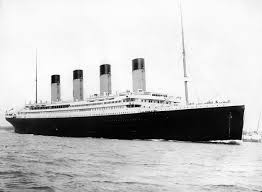Motivation by Compulsion
Desire is where our drive comes from, right?
Desire is what makes us want that success, that achievement or that prized possession.
Yet can't desire also make us stressed, when it makes us want too much, or pushes us to try so hard we lose ourselves.
And can't others own our loyalties by exploiting our desire, as when organisations "motivate" their staff by dangling "carrots" - cash bonuses, for example - in return for "good performance".
Unless, that is, they're applying a little bit of stick - and making us scared of falling short of their expectations.
Fair enough, we might think...
But here's the problem: this "carrot and stick" approach relies on triggering our stress biology. In other words, the desire and fear on which this technique relies are directly involved in our stress response.
*
^ Drive that’s not truly ours
Desire gives us drive yet can overpower, as when we become so “driven to distraction” by our desire for someone or something that, effectively, we lose our self.
Desire - or compulsive desire - that doubles up as compulsion can consume us and crowd out joy and love, denying us the courage to be loyal to who we are already and with what we already have.
That’s how desire can threaten our innate creativity - and cost us our true realness, in our true, creative self.
When it becomes too powerful, desire flips from healthy to unhealthy.
Something similar occurs with fear and anger, both of which can make us as “driven” as when we’re filled with compulsive desire. Fear, for example, has the power to make us shrink in terror from some given “fear object”, while anger can have us stewing in vengeful rage for hours on end.
In all these cases, and whether it’s compulsive desire, fear or anger that does enslaving, our free will becomes lost.

Upping the pace just to placate
anger and
fear - and their stablemate, the
desire that makes us unable to wait - is a no-win game and a mistake, as history clearly states. Take the passenger liner
Titanic. The owner, White Star Line, didn’t hesitate to obey stress biology’s dictates, and leant on the skipper to create a splash and make waves. Captain Smith his name, he was made to take a short cut by sailing close to the North Atlantic ice. The map had been consulted and the coordinates marked, but not in the interest of keeping things safe... only in the pursuit of fame. The new guys at the helm were bound by blind ambition: White Star Line just had to get on the front page, and they had to have the speed record for the crossing smashed. On 15 April, 1912, the tale ended in tragedy. “More than 1500 lives lost,” the headlines read, as against an iceberg Titanic was dashed.
*
Short-cuts that we take - when under the influence of "stress forces" like compulsive desire
and fear
- often end rather badly.
Given its reliance on fear & Co., carrot and stick - or the so-called controlled
kind of motivation - can harm our performance, as confirmed by a growing weight of research. Then, there are those world events in which the same approach ends in a bust. Therefore, as good as they are at the coax and the goad, carrot and stick can blow some pretty big holes, as was noted in the 2001 Enron false accounting fiasco. Not far behind was the subprime mortgage splurge - that, as we well know, in 2008 collapsed the economy of the globe (the big banks used the carrot of bonuses to reward their staff for the volume of home loans that they arranged, regardless of the borrowers’ prospects of ever paying them back).

